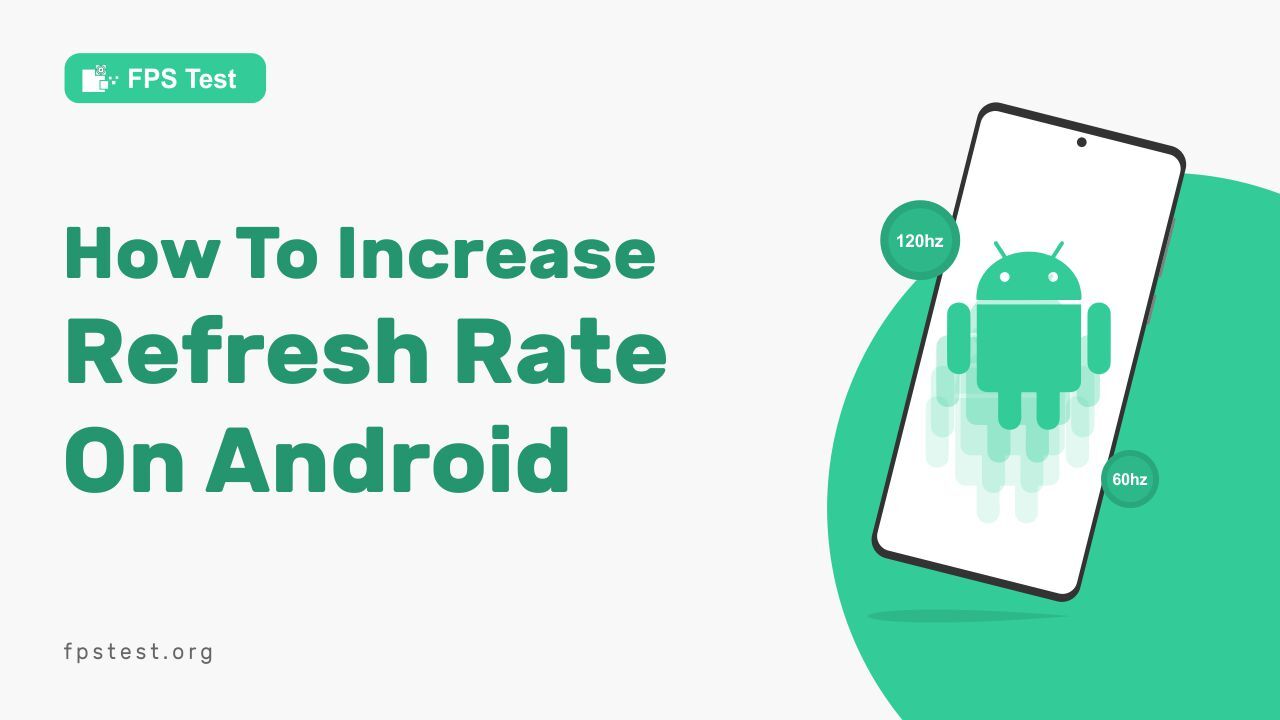New smartphone brands woo their customers using high resolution and refresh rate features in their advertisements. This shall make you ponder whether it is necessary at all.
Here, we will be discussing refresh rates, their importance, refresh rates on mobiles, related settings on your mobile, and their effects.
Go through this article to know everything about refresh rates and resolution.
What Is A Refresh Rate, And Why Is It Important For Android?
A refresh rate is a technical term for the image quality delivered by the monitor on any device. Refresh rate can be defined as, the rate at which the image is displayed by the monitor to the user.
Simply saying, it is the image quality displayed on the screen of a monitor.
To elaborate further, refresh rate can be understood as the number of times any image is refreshed by the system before displaying it on the screen.
The refresh rate denotes a number or frequency. It is expressed in the quantity, ‘Hertz.’ I.e., Hz. The lowest refresh rate is 60 Hz, and the highest can go up to 144 Hz. A higher refresh rate in Hz means better image quality.
Knowing the refresh rate for an Android is very important for various reasons. While buying, taking an Android or monitor with high refresh rates is important for getting a high-quality viewing experience.
When the refresh rate is high for a monitor, images, and letters so produced on the screen are sharp and clear. Thus, there is less strain on the eyes, which ensures healthy eyes. If you struggle with poor image quality on your phone, you can check and increase your phone’s refresh rate.
Though high refresh rates may mean better quality, they also possess a threat to battery life. A high refresh rate drains the battery of your device fast. Hence, if you ever have trouble with rapid drainage of the battery, the refresh rate is one of the culprits to watch.
In such a case, you should know how to change the refresh rates to fix the problem.
How To Change The Screen Refresh Rate On Android?
Follow these simple steps, one by one by one, to change the refresh rates for your Android in seconds.
1. Open The Android Settings Application
On your Android mobile, locate the settings app from the apps section. It can also be found on the notification bar. Open the settings application from here. From the notification bar, settings can be opened by long pressing the settings icon.
2. Navigate To Display > Advanced
After opening the settings app, head towards locating the display option. After entering the display settings, choose the advanced option.
3. Disable The Smooth Display Option
Under the advanced display settings, you will find the smooth display option. Disable this smooth display option. This way, you can change your screen’s refresh rate.
Note: Some Android mobiles may not have smooth display options. This implies that the refresh rates for those phones are non-alterable.
Check Android Display Refresh Rate Using Tools
After performing the steps mentioned above for changing the refresh rates, you shall check the refresh rate of your device. This is to know your screen’s refresh rate and to verify if the refresh rate has changed.
To check the refresh rate of your Android display, check out this online Refresh Rate Test tool.
On this website, take a refresh rate test to check your Android refresh rate. As soon as you open the website, the refresh rate of your Android will be displayed on the top of the screen in Hz and the resolution will be expressed in FPS.
How To Change Screen Resolution On Android?
Screen resolution and the refresh rate is similar, as both terms indicate the display quality of your monitor. The Screen refresh rate is related to the image quality, whereas the screen resolution depicts the motion quality.
Screen resolution is expressed in frames in seconds(FPS). A high resolution means better movements and smooth performance while playing videos or games.
This screen resolution is also alterable like the screen refresh rate. To change the screen resolution on Android. Follow the given steps below.
1. Open The Setting Application
Open the settings on your Android from the applications section or directly from the notification bar.
2. Select Display
Navigate to the display option under settings and open the display.
3. Navigate To Screen Resolution
Find the screen resolution option in the display and tap to open the screen resolution.
4. Change Screen Resolution
Lower or increase the screen resolution as per your requirements. While doing so, remember that high resolution will also consume more battery in addition to the advantages it provides.
Some androids don’t have the option to change the screen resolution. In such a case, the screen resolution is fixed for that device.
FAQs
Can The Refresh Rate Be Increased?
Yes, it is possible to increase the refresh rate of your Android or monitor. To do so, simply follow the steps given above in the article.
Does A High Refresh Rate Affect Battery Life?
Yes, a high refresh rate drains the battery faster than a low refresh rate. This is because more processing power of your system gets engaged in providing good resolution of the images.
What Is The Highest Refresh Rate On A Phone?
The highest refresh rate on a phone recorded so far is 120 Hz. The phone which claims to provide such a high refresh rate of 120 Hz is the new Samsung galaxy s20.
Does A High Refresh Rate Damage The Screen?
No, a high refresh rate will not damage the phone’s screen. On the contrary, it provides a good-quality image on the screen. The screen can be damaged only due to mishandling by the user.
Which Hz Display Is Best For Android?
120 Hz display is the best for androids. It gives a smooth experience, fast movements, no lagging issues, and excellent-resolution images.
Conclusion
You shall have a clear understanding of screen refresh rates and resolutions by far. The screen refresh rate has become a vital part to look out for while buying a new device. It rules the display quality of a device.
It is also significant for gamers alike. Gamers demand a high-resolution device for a smooth gaming experience.
Hence, knowing the refresh rates, resolution, and alteration on your device is very important. These key points are concisely delivered in this article.




